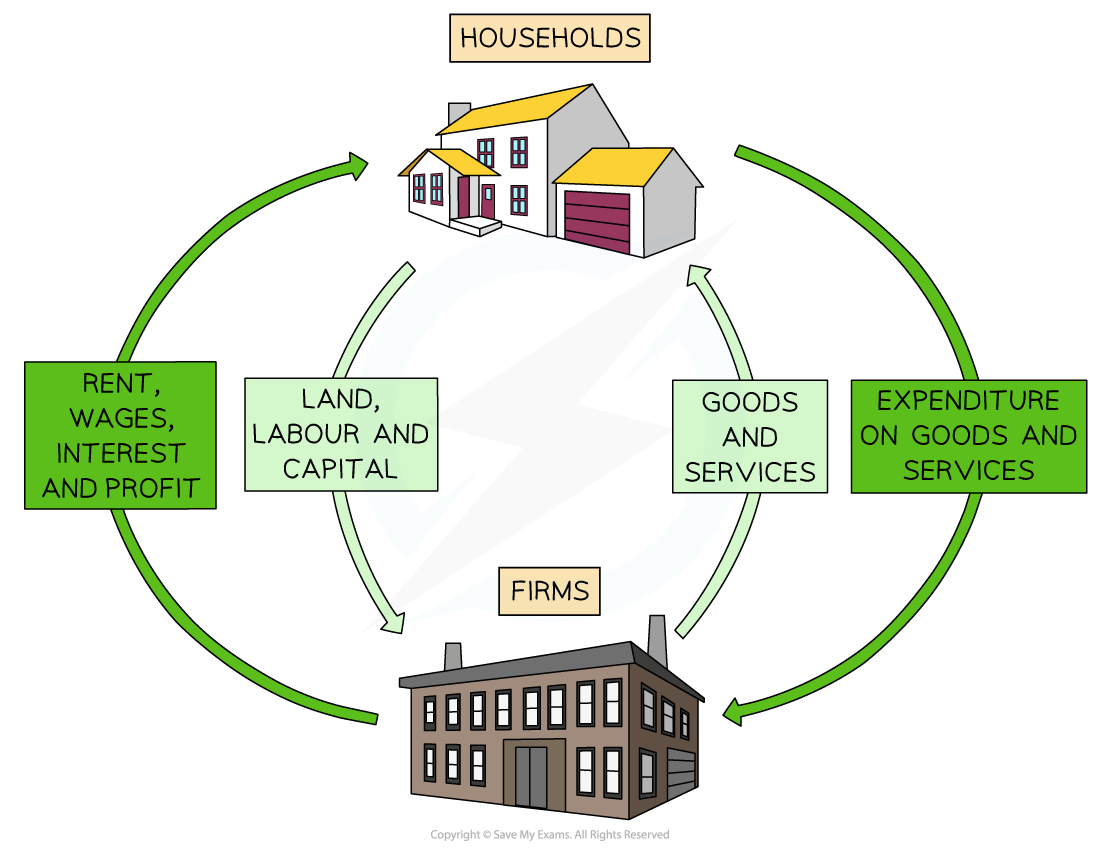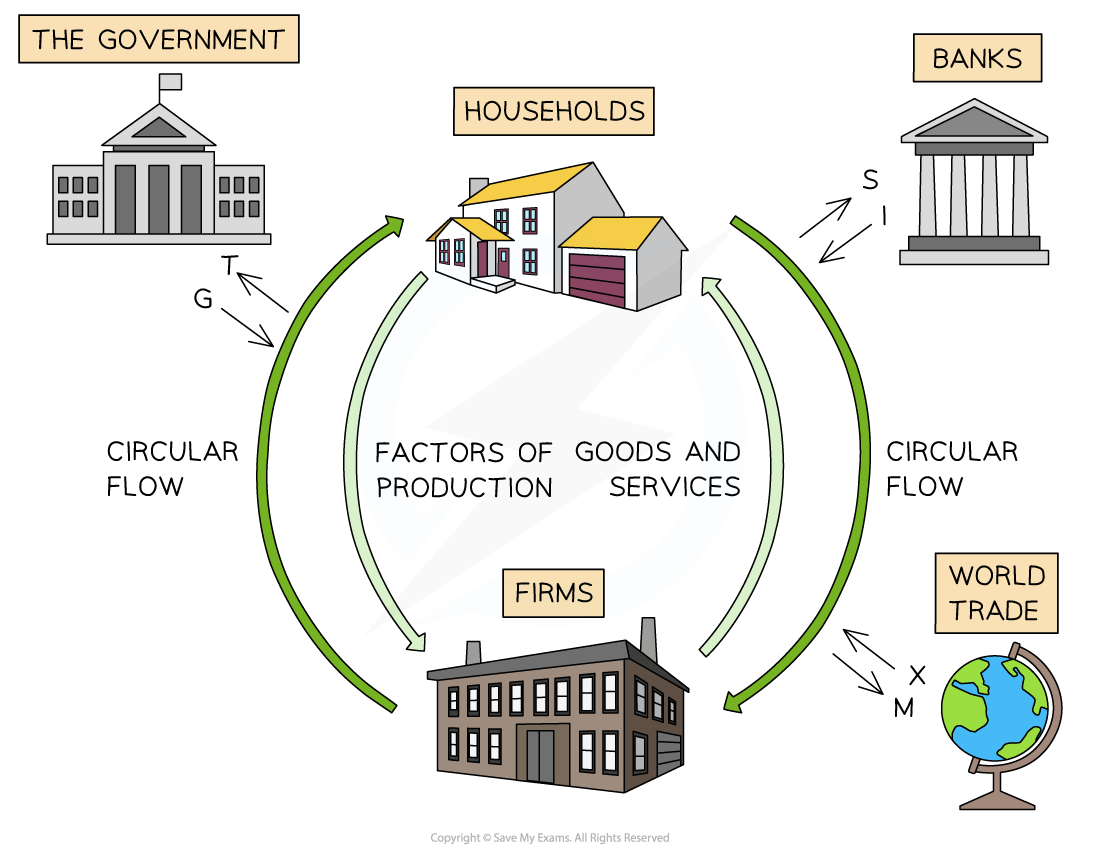The Circular Flow of Income
- The circular flow of income is an economic model that illustrates the money flows in an economy
- There is a simple model which shows the money flows between households and firms
- There is a more complex model which adds in other economic agents including the government, financial sector and foreign trade (net exports)

A diagram showing the simplified Circular Flow of Income between households and firms
Diagram Analysis
- Households own the wealth in the economy
- These are the factors of production
- Households supply their factors of production to firms and receive income as a reward
- They receive rent for land, wages for labour, interest for capital, and profit for enterprise
- With this income, they purchase goods/services from firms
- Firms purchase factors of production from households
-
- They use these resources to produce goods/services
- They sell the goods/services to households and receive sales revenue
-
Leakages & Injections
- Money can enter or leave the circular flow of income in an economy
- Injections add money into the circular flow of income and increase its size
- Increased government spending (G)
- Increased investment (I)
- Increased exports (X)
- Leakages (withdrawals) remove money from the circular flow of income and reduce its size
- Increased savings by households (S)
- Increased taxation by the government (T)
- Increased import purchases (M)
- There are high levels of interdependence between households, firms, the government, the financial sector, and the foreign sector (foreign firms and households)

A diagram that shows the injections and leakages that influence the relative size of the circular flow of income
Diagram Analysis
- Government: Government spending (G) is an injection and taxation (T) is a leakage
- Financial sector: Investment (I) is an injection and savings (S) is a leakage
- Foreign sector: Exports (X) is an injection and imports (M) is a leakage
- The relative size of the injections and withdrawals impacts the size of the economy:
- Injections > withdrawals = economic growth
- Withdrawals > injections = fall in real GDP
- Injections represent new income in the economy
- Changes to any of the factors that influence government spending, investment, consumption and net exports will increase/decrease the relative size of the circular flow of income
- E.g. An increase in interest rates will increase savings (withdrawal), and reduce consumption and investment
Exam Tip
Remember to consider the net effect and proportionality of the injections and withdrawals. For example, if the size of the government spending is large, it is likely to completely outweigh the combined withdrawals of savings and imports.
This model connects extremely well to the concept of interdependence. There are high levels of interdependence between households, firms, the government, the financial sector, and the foreign sector (foreign firms and households).